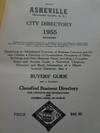

Manuscript document regarding a loan to John Charles Fremont for his failing Las Mariposas Estate.
by [MARIPOSA ESTATE] LANDENBURGH, O
- Used
- Hardcover
- Signed
- first
- Condition
- See description
- Seller
-
Portland, Oregon, United States
Payment Methods Accepted
About This Item
London: N.p., [ca. 1860]. Five leaves [10 pp; 8 1/2 x 13 /12 inches], handwritten by Landenburgh in ink on all sides. Affixed at the top. Signed by Landenburgh on the last page. Accompanied by a typed transcription of the document bound in blue cloth. A fine carte-de-visite photograph of Fremont and two engraved portraits of him at the back of the typescript. Small typographic booklabel, old fold-lines, three repaired marginal tears. The whole housed in two folding cloth chemises in a divided cloth slipcase with a red morocco gilt lettering label. Very good.
[Together with]
[MARIPOSA ESTATE]. The Mariposa Estate: It's Past, Present and future. Comprising the Official Report of J. Ross Brown (U.S. Commissioner) upon its Mineral Resources. With a View of the Causes which Led to the Late Failure of the Company, etc.. New York: Russells' American Steam Printing House, 1868.
First edition. Octavo. 62 pp. Complete with the large color lithograph map of the the Mariposa Estate bound in at rear. Publisher's blind-ruled black cloth, gilt cover lettering. Expertly rebacked to style. Some minor soiling to boards but overall a very sound and attractive copy of this rare item. Contemporary inscription by J. Ostrander to James Mackin (American merchant, banker and politician), dated 1869. Small typographic booklabel. Very good.
[Together with]
[MARIPOSA ESTATE]. SILLIMAN, B[enjamin]. Review of the Nature, Resources and Plan of Development (Now in Progress) of the Northern Division of the Mariposa Estate. N.p.: New York, 1873.
First edition. Octavo. [2], vi, (3)-95, [1] pp. Publisher's brown cloth over flexible boards, gilt cover lettering. Cloth lifting from boards. Very good.
"The Fremont Grant [i.e. the Mariposa Estate], also known as the Rancho Las Mariposas, was a vast estate of 44,386 acres of grazing land in the Mariposa hills, which Colonel J. C. Frémont acquired by virtue of a purchase made in 1847 from J. B. Alvarado. It was one of several so-called “floating grants.” After gold was discovered in the Mariposa region in 1848, Fremont “floated” his rancho far from the original claim to cover mineral lands including properties already in the possession of miners. The center of Fremont’s activities was Bear Valley, thirteen miles northeast of Mariposa. Lengthy litigations in the face of hostile public sentiment piled up court costs and lawyer fees. However, the United States courts confirmed Fremont’s claims, and other claimants, including the French Company, lost many valuable holdings. Tremendous investments were made in stamp mills, tunnels, shafts, and the other appurtenances related to the mining towns as well as to the mines which Fremont attempted to develop" (Russell, Carl P. "One Hundred Years in Yosemite"). In January 1863, Fremont, then a Major-General in the Union Army, sold Rancho Las Mariposas with its mines and infrastructure to Morris Ketchum, a New York City banker, who formed a public corporation, the Mariposa Company, and sold stock. Fremont remained part of this new company as a board member. In 1863, Frederick Law Olmsted, noted New York landscape architect, came to Mariposa as superintendent for the Mariposa Company. He soon hired Yale chemist and geologist, Benjamin Silliman Jr., to survey the property (Silliman was to issue two reports; the first in 1864 and the second in 1873; offered below). Frederick Law Olmsted went on to write his landmark report of 1865, the first to recommend management guidelines for the newly reserved Yosemite Valley and Mariposa Grove of Big Trees (Yosemite and the Mariposa Grove: A Preliminary Report, 1865.)
The first item is a rare manuscript document relating to a key aspect of John Charles Fremont's financial machinations with his Las Mariposas Estate and attempts to obtain loans backed by the estate to fund his efforts to subdivide the land as well as cover other expenses. From the printed foreword (in the typescript) written by the previous owner: "In the financing of the Mariposa Estate Fremont ultimately turned to the British market for funds, conducting negotiations through Sir Charles Fox, Morgan, Peabody & Co, J. T. Howard and other noted bankers of the period. In the prosecution of this business-involving several millions of dollars-he was represented by the London financial and mining authority, O. Landenburg, The present document constitutes Landenburghs's report on the property and the best means of financing the undertaking". Within it Landenburgh discusses the current banking situation in London and presents numerous innovative ideas, such as as having promotional stereoscopic photographs made of the property (a novel idea at the time). Probably as a result of this report by Landenburgh, John Charles Fremont sailed to London in January 1861 to confer with him. A fine source document.
The next item is a promotional book by the new investors in the Mariposa Grant. Published four years after Fremont sold the Grant, much of the book is taken up with Ross' mining report and the rich history of the Estate. There are also details about the financial machinations surrounding the Estate, its promotion and sale. The color lithograph topograhical map of the Estate is of particular importance; "Las Mariposas Estate, Mariposas County, California. Containing 44,386 83/100 Acres or 70 Square Miles" (15 x 19 1/2 inches). Includes reports on the Josephine Mine, the Mariposa Mine, the Green Gulch Mine and William T. Bourne's report.
The third item is Silliman's second report on the mineral resources of the Mariposa Estate (formally known as the Fremont Grant) and is addressed to stockholder of the Mariposa Land and Mining Company. The enthusiastic tone of the report reflects such recent advances in mining technology as the development of the Burleigh Drill and new sophisticated explosives. By this time, the mineral legacy of the Mariposa Estate was largely finished.
In spite of its phenomenal but spotty productivity, the Fremont Grant brought bankruptcy to its owner and was finally sold in 1864. The town of Mariposa, which was on Fremont’s Rancho, became the county seat in 1854, and the present court house was built that year. The seats and the bar in the courtroom continue in use today, and the documents and files of the mining days still claim their places in the ancient vault. They constitute some of the priceless reminders of a dramatic period in the early history of the Yosemite region. In these records may be traced the transfer of the ownership of the Mariposa Grant from Fremont to a group of Wall Street capitalists. These new owners employed Frederick Law Olmsted as superintendent of the estate. He arrived in the Sierra in the fall of 1863 to assume his duties at Bear Valley. The next year he was made chairman of the first board of Yosemite Valley commissioners, so actively linking the history of the Mariposa estate with the history of the Yosemite Grant. Olmsted continued his connection with the Mariposa Grant until Aug. 31, 1865, at which time he returned to New York and proceeded to distinguish himself as the “father” of the profession of landscape architecture" (Russell, Carl P. 'One Hundred Years in Yosemite'). The Estate went through the hands of a number of investors and the last company, The Mariposa Commercial Mining Company, an English company, found more viability in leasing land and claims to individuals than to investing on their own.
A fascinating grouping of items relating to the history of the largest single piece of property in the Mother Lode and its famed owner, Pathfinder John C. Fremont.
Reviews
(Log in or Create an Account first!)
Details
- Bookseller
- Nat DesMarais Rare Books, ABAA
(US)
- Bookseller's Inventory #
- 71354
- Title
- Manuscript document regarding a loan to John Charles Fremont for his failing Las Mariposas Estate.
- Author
- [MARIPOSA ESTATE] LANDENBURGH, O
- Book Condition
- Used
- Quantity Available
- 1
- Binding
- Hardcover
- Publisher
- N.p.
- Place of Publication
- London
- Date Published
- [ca. 1860]
Terms of Sale
Nat DesMarais Rare Books, ABAA
30 day return guarantee, with full refund including original shipping costs for up to 30 days after delivery if an item arrives misdescribed or damaged.
About the Seller
Nat DesMarais Rare Books, ABAA
Biblio member since 2012
Portland, Oregon
About Nat DesMarais Rare Books, ABAA
Nat DesMarais Rare Books specializes in books on the Sierra Nevada (particularly Yosemite), the Mojave, and California books in general. We also deal in the art of the American West, voyages and travels and nineteenth century literature.
Glossary
Some terminology that may be used in this description includes:
- Morocco
- Morocco is a style of leather book binding that is usually made with goatskin, as it is durable and easy to dye. (see also...
- New
- A new book is a book previously not circulated to a buyer. Although a new book is typically free of any faults or defects, "new"...
- Leaves
- Very generally, "leaves" refers to the pages of a book, as in the common phrase, "loose-leaf pages." A leaf is a single sheet...
- Fine
- A book in fine condition exhibits no flaws. A fine condition book closely approaches As New condition, but may lack the...
- Cloth
- "Cloth-bound" generally refers to a hardcover book with cloth covering the outside of the book covers. The cloth is stretched...
- Octavo
- Another of the terms referring to page or book size, octavo refers to a standard printer's sheet folded four times, producing...
- Gilt
- The decorative application of gold or gold coloring to a portion of a book on the spine, edges of the text block, or an inlay in...
- Rebacked
- having had the material covering the spine replaced. ...

